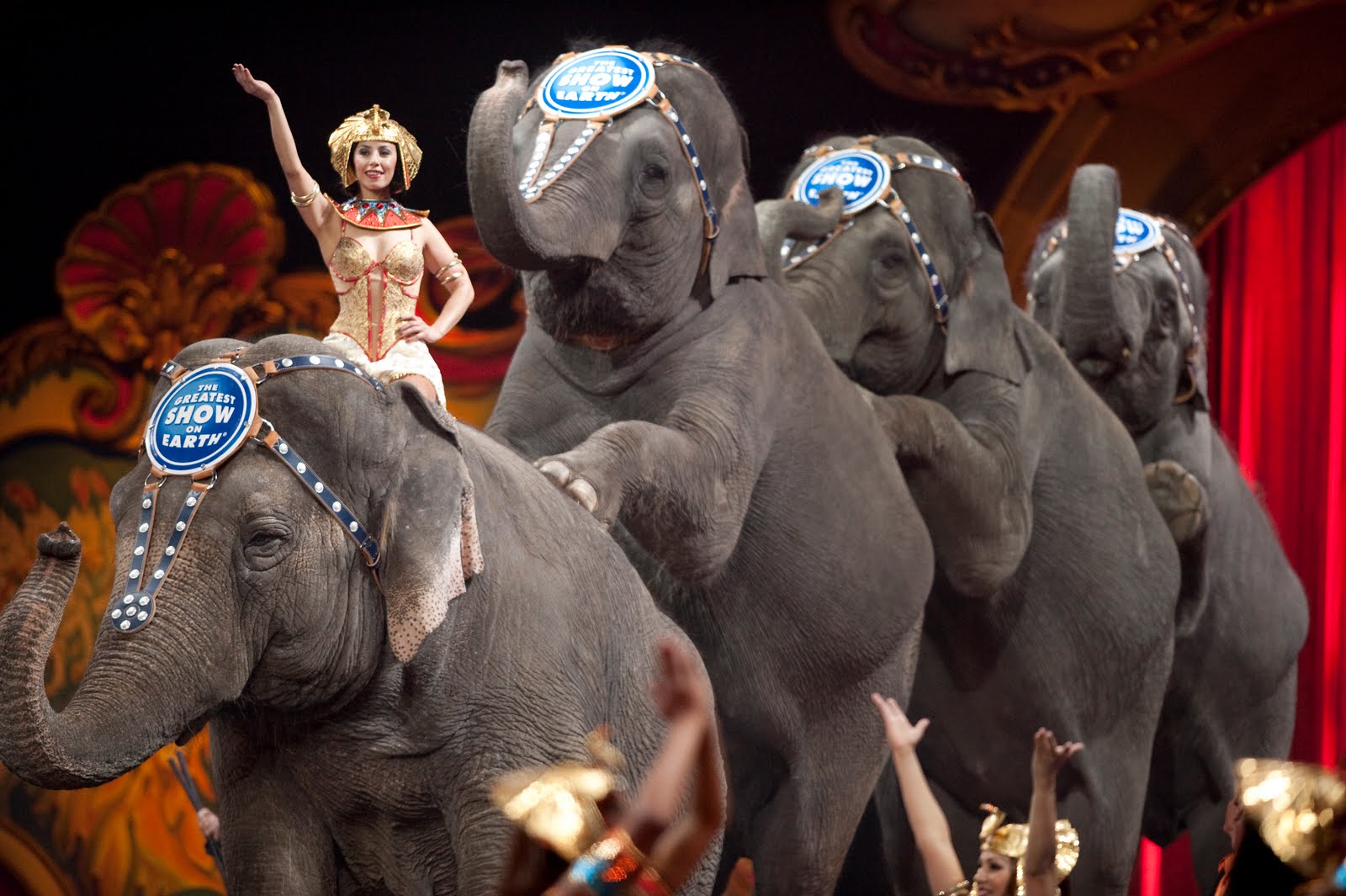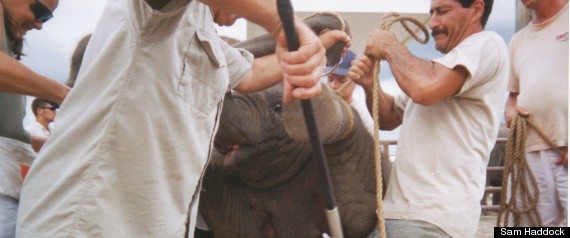The Plight of Circus Elephants: Are they abused or loved?

Elephants have long been trained since 2000 BC for various uses, including logging, transport, and entertainment. In fact, captive elephants in the United States started out in circuses. In the contemporary world, there is a growing issue of whether elephants should be kept in circuses or not. In this blog post, I will focus on Ringling Bros. and Barnum & Bailey Circus, dubbed "The Greatest Show on Earth". Ringling Bros. owns 47 Asian elephants, the largest herd and Asian elephant gene pool in the United States. Sorry if I'm biased, but I love talking about elephants.This blog post will explore whether elephants should be in circuses or not.


A brief history of circus elephants:
Elephants have been in circuses for the last three hundred years and been trained for centuries in Thailand, India, and Burma. The first elephants brought to the United States were mainly used as spectacles, massive gentle giant exhibitions. Circuses capitalized on the elephant craze, transporting elephants by the hundreds. However, due to a lack of knowledge of elephant behavior and physiology, elephants died quickly in circuses. Circuses desperately tried to breed elephants to gain money. Elephant birth rates were mediocre at best and circuses abandoned most attempts to breed their elephants, relying on importing more elephants. However, two things were discovered during the elephant age of circuses. For one, African elephants, while certainly larger than Asian elephants, were harder to train and more unstable. Also, bull elephants were found to go into musth, a period of extreme testosterone that made even the most docile elephants into murderous rampaging beasts. Zoos quietly began to phase out African and bull elephants. The majority of elephants that circus viewers see today are Asian female (they are the most easily trained and compliant) and juvenile males who have not reached sexual maturity.

Ringling Bros. Elephants:
The circus giant owns 47 Asian elephants as of 2014, the largest of any animal owner in the United States. The circus claims that the best care is given to the animals' health and welfare. The circus believes that promoting human-animal interaction is vital to increasing public awareness of the need to protect and preserve animal species. They state, "Captive animals play an important role as Ambassadors — teaching people about the animals' needs and challenges and about our responsibility to ensure their future survival." CEO Ken Feld of Feld Entertainment, who owns Ringling as well as Disney on Ice, Disney Live!, and Monster Jam states that they meet all requirements for zoos and circuses for animal welfare. The circus has been a source of controversy since the release of a video that showed employees "breaking in" an elephant. Here is the new about Ringling Bros. circus elephants.

In a statement by Janice Aria, the director of animal stewardship with Ringling Bros., she claims that
"Our animals are inspected by animal welfare officials in nearly every city we visit, including New York City. We are also routinely inspected and are licensed by the U.S. Department of Agriculture."
Read more: http://www.nydailynews.com/entertainment/elephant-bullhook-guide-safe-ringling-bros-big-article-1.1620674#ixzz2uNBgfkMo
Read more: http://www.nydailynews.com/entertainment/elephant-bullhook-guide-safe-ringling-bros-big-article-1.1620674#ixzz2uNBgfkMo

Aria then goes on to state that the elephant guide (also known as a bullhook) is a safe and widely used tool. Certainly widely used, but undercover PETA videos show Ringling Bros. elephant trainers abusing their elephants with the metal rods. There is a plethora of abuse videos and websites that are aimed to taking elephants out of circuses. Many local politicians have petitioned to have their cities ban the use of the bullhook. The circus has been on the defense for years by animal rights groups. The circus doesn't have much going for them on the surface, with videos, documents, and pictures of elephants being chained, gouged, beaten, and given inadequate care by circus employees. However, all is not what it seems.

The circus does have some advantages on its sides. As a $1 billion company, they wield enormous influence and power, and approximately 30 million people view a Feld entertainment show annually. The circus giant recently won $9.3 million from the ASPCA lawsuit, a lawsuit that involved Ringling abusing their animals. It was discovered that the animal welfare group had paid off the former elephant handler to testify in its case. It is hard to believe that Ringling Bros. is an evil company destined to control and beat generations of elephants. It's quite expensive to maintain elephants, about $60-100,000 a month. Ringling opened its Center for Elephant Conservation in 1995, aiming to promote elephant breeding and conservation. The center has been labeled as a mere place to churn out elephants for the circus, but the circus claims that only a third of the elephants born at the CEC are fit for entertainment. The center has had 26 births since its opening, a rare feat when one considers that the elephant gestation period is 22 months.

Bryan's Opinion: This is an ongoing issue that is not easily remedied. On one hand, I like the circus. And also, if the circus had truly been abusing elephants, the USDA (Department of Agriculture) would've most likely shut down elephant care. The circus knows that if true abuse had been going on, public outrage would've been infinite and elephants are expensive and rare. The penalty for killing or even injuring a performing elephant would be severe for elephant trainers. It's hard to believe that the circus abuses its elephants, otherwise injuries and deaths for elephant trainers would be more common. On the other hand, there is much evidence against Ringling for its treatment of elephants. Statements released by the circus giant skate over the treatment of the elephants and focus on the positive things that Ringling does for its elephants. I believe that circus elephants could potentially continue, but it would be best to abandon bullhooks and to stop traveling long hours in chains. If the circus could improve its care for its elephants, then it would be fine for me. But if they continue to ignore the abuse for their behemoth money-makers, then it would be a great idea to get rid of elephants in the circus.
For Feld Entertainment CEO and owner of Ringling Bros. circus Ken Feld's view on elephants, look below:
For animal rights groups views on circus elephant, look below:






